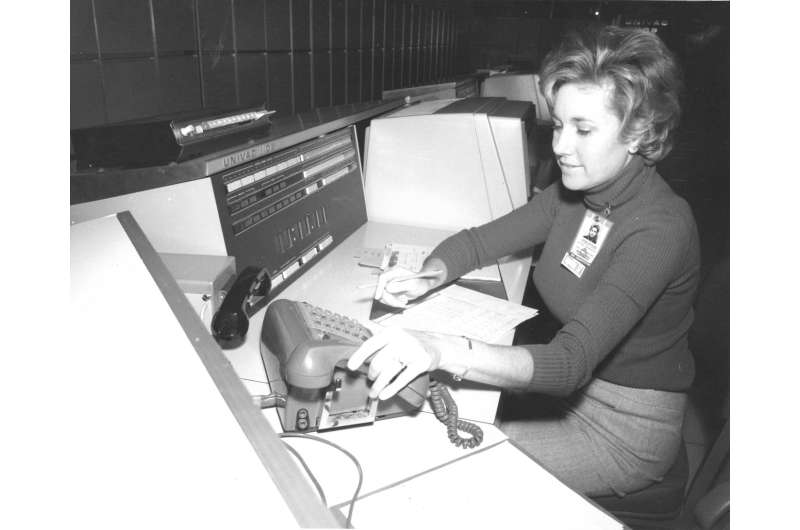Running a real-time simulation of go-no-go for Apollo 17

Not everyone gets to become a part of history, but mathematician Billie Robertson is one of the lucky ones. In this image taken on Nov. 27, 1972, she was running a real-time simulation of Translunar Injection (TLI) Go-No-Go for the Apollo 17 lunar landing mission.
Originally intending to become a math teacher, Robertson took a job with the Rohm and Haas Company at Redstone Arsenal in 1951, calculating the thrust of rocket engines. In 1952, she accepted a position with the Army and the Wernher von Braun rocket team. Over the course of her storied career, Robertson worked with on a variety of projects, including the guidance and control computer software for the Jupiter C program (which launched the first U.S. satellite, Explorer I, into space).
After the 1960 transfer of the Army Ballistic Missile Agency team to NASA, she developed the manual for computer models related to launches during the Apollo, Skylab, and Apollo Soyuz Test Project (ASTP) programs. During the ASTP program, Robertson served as the coordinator for all support requirements from the Computer Services Office related to ASTP launch Information Exchange Facility/Huntsville Operations Support Center activities. Throughout her career, Robertson visited schools where she spoke to young women about professional opportunities in the aerospace industry.
Provided by NASA

















